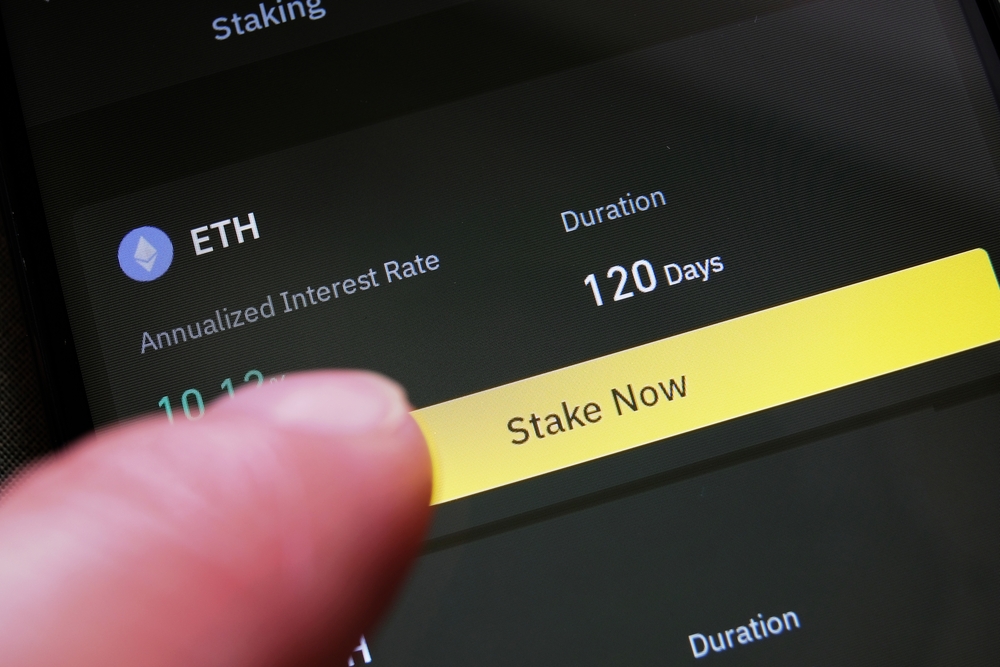
How To Stake Ethereum
As Ethereum moves ever closer to its merge to a fully proof-of-stake-based chain, staking Ethereum is becoming an increasingly attractive means of earning passive income from your crypto holdings.
Thanks to its long-standing history in the market, the promising news of upgrades to its network that have recently led to sharp price increases, and its stronghold on the NFT space, Ethereum has rapidly grown in popularity as a digital asset.
This includes being an asset to build with and to trade with, but also to hold and use to earn passive income through staking.
Should I stake my Ethereum?
In its inception, Ethereum was built on the fundamentals of Bitcoin, and much like Bitcoin, Ethereum initially operated using a proof-of-work (PoW) consensus mechanism.
PoW requires miners to validate transactions, whereas, with proof-of-stake (PoS), blocks are verified by validators who earn staking rewards by staking tokens.
So in short yes, there are several benefits to staking Ethereum, which we’ll delve into in this article.
Ethereum 2.0 Staking
The first key part of Ethereum’s highly-publicized ETH 2.0 upgrade was the addition of the Beacon Chain, first launched in December 2020, which introduced staking to the network, and started the transition from the less energy-efficient PoW.
However, not everyone who holds Ethereum will have enough liquidity to become a validator themselves, since 32 Ether are required to become a validator. This has opened the floor for liquid staking platforms that allow you to pool your crypto with others and benefit from staking rewards.

What is Lido?
Lido is a decentralized liquid staking platform that allows anyone to stake their Ethereum regardless of how much Ethereum they own.
To stake Ethereum on the main Ethereum network you must own 32 Eth which is a barrier to entry for most Eth holders. However, you can stake any amount of Eth with Lido through what’s known as “liquid staking”. In exchange, you receive stEth, which can be used across DeFi applications, such as SushiSwap and Yearn Finance.
How does Lido staking work?
When you stake your Eth with Lido, you’ll get “staked ETH” (stETH) in return, which can be exchanged back for Ethereum, rewards are paid daily and there is no minimum amount required to stake.
You can use, transfer and trade your stETH whenever and wherever you wish. You can even yield farm your staked Eth in your favourite DeFi apps and profit twice. Gone are the days when you had to simply rely on the price going up to make gains in crypto!
How to stake Ethereum with Lido
We’ve outlined the steps for staking Ethereum using Lido below. The steps are slightly different depending on whether you’re using a hardware or software wallet.
Step 1: Prepare your wallet
The most popular Ethereum browser wallets are Metamask and Trust Wallet, make sure you’ve got enough Eth in your wallet to cover the transaction fees.
Using Lido through Metamask means you can connect to a hardware wallet, such as a Ledger.
Using a cold wallet is always recommended for additional security, especially when handling large amounts. To connect to Lido using a hardware device, you can connect your device to Metamask, which can also be done through the browser extension.
Step 2: Connect to Lido
Visit the Lido website, and click the “Connect wallet” button in the middle of the screen, or in the top right-hand corner.
Once you’ve read and agreed to Lido’s terms, your wallet will connect and you’re almost ready to start staking.
Step 3: Choose your stake amount and confirm
Type in the amount of ETH you’d like to stake – this can be any amount. Click the “Submit” button to continue, and confirm the transaction in the pop-up window.
For Ledger users, you’ll need to confirm and sign the transaction directly on your device.
The window will take a few moments to confirm before showing you a confirmation screen with your new stETH balance which you’ll also find in your wallet.
And that’s it, you’re now staking on the Ethereum network!
You can stake any amount of ETH with Lido (Source: Lido).
Using your stETH
Once you’ve staked your Eth with Lido you’ll receive stETH, an alternative to Eth that you can use, transfer and trade.
If you’re using MetaMask, to use your stETH, you’ll need to manually add it to your Metamask wallet by opening the browser extension, clicking “Assets”, then “Add token” and finally “Custom token”. Here are the token details for stETH:
- Token Contract Address: 0xae7ab96520de3a18e5e111b5eaab095312d7fe84
- Token Symbol: StETH
- Decimals of Precision: 18
Once you’ve added stETH to your wallet as an asset, you’ll be able to trade it or use it for yield farming.
If you’re thinking of purchasing Ethereum so you can start staking and earning rewards, you can do so with Xcoins – we offer 0% processing fees on your first purchase as well as no verification when you buy up to $150 worth of crypto. Sign up now to benefit from buying crypto instantly and securely using Xcoins.
To stay up to date on all things crypto, like Xcoins on Facebook, follow us on Twitter, Instagram, LinkedIn, and sign up at the bottom of the page to subscribe.

